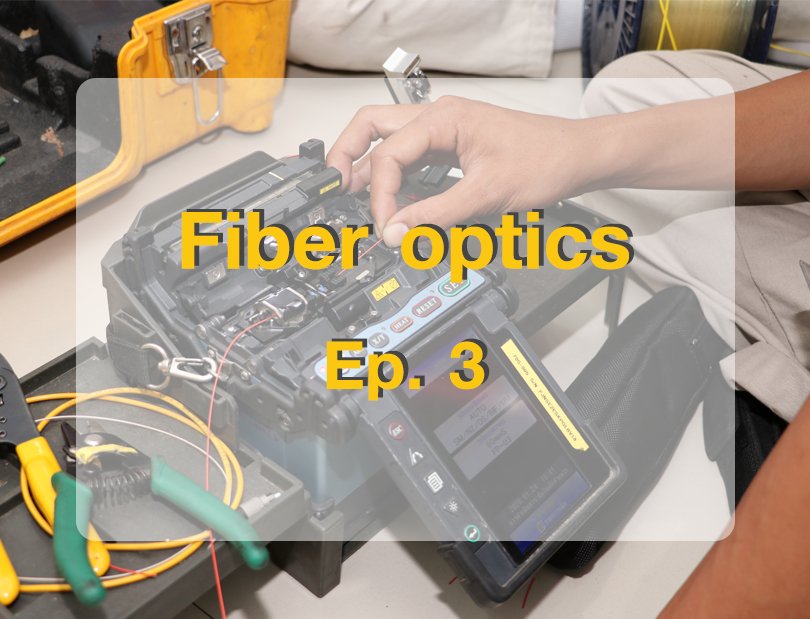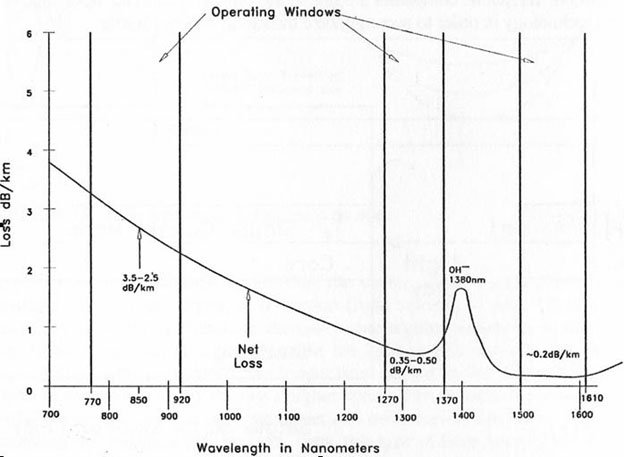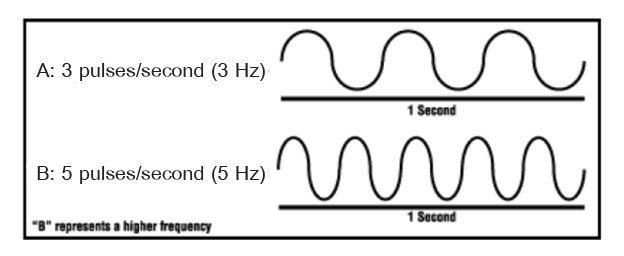Optical Fiber Parameters Ep1

Communication with Fiber Optic Cable
(Optical Fiber Parameters)
Main network connection Mobile phones, Internet or data information. At present it is converted to light. And pass to the fiber optic cable. Because its high stability, Low loss , More secure data. And long life.
That is why we should know information communication with fiber. This article discusses. The moving length is used in the optical transmitter, the optimum length of light transmission, called the window, the communication frequency, the attenuation, the attenuation of the Intrinsic Attenuation
There are many different types of light transmitters in the system. Parameter affects the system, so we need to understand the parameters of Fiber Optic. It can be designed. And completely installed error-free.
1. Wavelength
The visible light is visible to the naked eye, called the Visible Spectrum. The light in this area can be seen in various colors. The visible light is a red, orange, yellow, green, and purple light as shown in Figure 1.

Figure 1 Optical Spectrum
Fiber Optic transmitters use wavelengths higher than the Visible Spectrum and are not visible to the naked eye. Typical wavelengths include 850 nm, 1310 nm, and 1550 nm.
Light emitting diodes (LASERs) and light-emitting diodes (LEDs) are used as light source emitters.
- LASERs use wavelength 1310 nm and 1550 nm for single mode.
- LEDs are used in Wavelength 850 nm and 1310 nm in Multi Mode.
CAUTION: Do not look at the end of the fiber optic cable. We can not see the light in the 1310 nm and 1550 nm areas, and the light can harm the eyes.
2. Windows
This is the best wavelength range for each Windows session, as shown in Figure 2. Main Windows have 3 range are available for 850 nm, 1310 nm, and 1550 nm.

Figure 2 Windows Using Optical Fiber
3. Frequency
System frequency is the speed of modulation of the source light source. The number of pulses / second depends on the light source. The frequency is Hertz (Hz) 1 Hz equal to 1 pulse or 1 cycle per second, as shown in Figure 3.

Figure 3 pulses per second (1 pulses / second is called 1 hertz)
4. Attenuation
Attenuation is the loss of light traveling through the fiber optic cable. The attenuation unit is (dB / km) relative to the distance. Fiber Optic The system has a very low loss. Most of the loss is due to the fiber optic cable connector or the cable from the lack of a problem. Loss is quite unusual. Attenuation can be observed from the initial Figure 4

Figure 4 is a sample table Attenuation.
5. Intrinsic Attenuation
Intrinsic attenuation is the attenuation caused by the inside of the fiber optic cable. Some cases are caused by the dirt mixed in the glass. In the production of fiber optic cable from the manufacturer. In the past, the factory had no way to remove all the dirt. Modern production technology in the 1970s. Can reduced the attenuation of contaminants.
When light travels to the dirt in fiber optics. One of these effects is scatter or absorption of light (Absorbed)
5.1 Scattering
Most scattering causes attenuation in fiber optic cables up to 96%. Light travels in the fiber and interacts with the atoms in the glass. Light waves are flexible when colliding with the atoms and impacting the diffusion of light. Scattering Scattering is caused by interference between the light wave and the atoms of the fiber optic. If we can control the scatter in the fiber optic, then there will be no attenuation in the fiber optic. The angle of the light wave changes. Can not go forward or travel short distances, or light may redirect you outside the fiber optic.

Figure 5 shows the Light Lost.
Sometimes scattering of light can back to the light source. This is a feature that is used in the Optical Time Domain Reflectometer (OTDR). Can be used to find the loss in the fiber. Like the point where the line is broken. Or spots with a splice line.
5.2 การดูดซึม (Absorption)
The second type of Intrinsic Attenuation in the fiber optic cable is absorption (absorption of light) in the fiber. The absorption of attenuation 3-5% is a natural phenomenon. This is caused by the dirt mixed in the glass and changed to Some vibration or energy is shown in Figure 6.

Figure 6 shows the Light Absorbed.
What is different from scattering is that the absorption can be limited. The amount of dirt that is in the process of fiber optic cable.
By MiMhee
| Survey On Site or Design for Esimate Cost | No charge |
![]() SLA : Bangkok, We're support and service with in 12 hours.
SLA : Bangkok, We're support and service with in 12 hours.
![]() SLA : Upcountry, We're support and service with in 24 hours.
SLA : Upcountry, We're support and service with in 24 hours.
MORE INFORMATION
TEL. 02-889-4701, 02-889-4702 FAX. 02-889-4700
CALL CENTER : 082-726-5320, 082-726-5321, 082-726-5322



